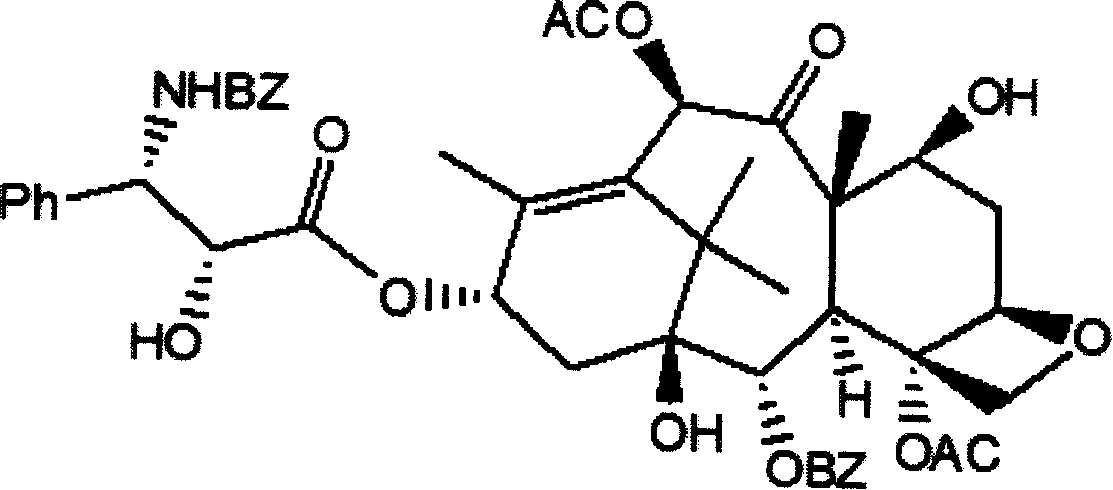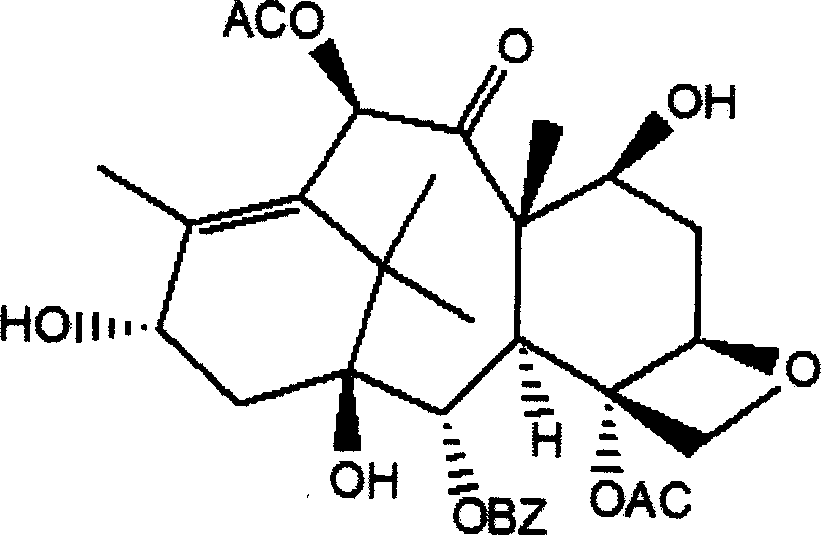Method for extracting four-taxone compounds with high-efficiency abduction
A high-efficiency paclitaxel technology, applied in organic chemistry, fermentation, etc., can solve the problems of weak environmental adaptability, no value of fermentation production, extraction of paclitaxel, etc., and achieve large-scale industrial production. The method is simple and easy to improve Yield effect
- Summary
- Abstract
- Description
- Claims
- Application Information
AI Technical Summary
Problems solved by technology
Method used
Image
Examples
Embodiment 1
[0022] Control group: Weigh 20g of fresh twigs and leaves of Taxus chinensis, add 100mL of water to homogenate, filter directly without any treatment, add 100mL of 80% ethanol to the filter residue, extract 3 times under ultrasonic conditions, each time for 30min, combine three times to clear the night, reduce pressure Concentrate until no obvious liquid flows out. The concentrated solution was sequentially extracted three times with n-hexane and chloroform respectively (the volume ratio of the extractant to the concentrated solution was 1:2). The chloroform phase was concentrated and evaporated to dryness. The resulting solid was dissolved in 1 mL of absolute ethanol and added to 20 mL of water. After standing for a while, it was filtered to obtain a white precipitate, which was weighed after drying: 0.026 g. The contents of paclitaxel and cephalomannine are 3.03% and 5.25% respectively. The precipitated aqueous phase was extracted 3 times with chloroform (the volume ratio o...
Embodiment 2
[0026] Control group: Weigh 20g of fresh twigs and leaves of Taxus chinensis, add 100mL of water to homogenate, filter directly without any treatment, add 100mL of 80% ethanol to the filter residue, extract 3 times under ultrasonic conditions, each time for 30min, combine three times to clear the night, reduce pressure Concentrate until no obvious liquid flows out. The concentrated solution was sequentially extracted three times with n-hexane and chloroform respectively (the volume ratio of the extractant to the concentrated solution was 1:2). The chloroform phase was concentrated and evaporated to dryness. The resulting solid was dissolved in 1 mL of absolute ethanol and added to 20 mL of water. After standing for a while, it was filtered to obtain a white precipitate, which was weighed after drying: 0.053 g. The contents of paclitaxel and cephalomanine were 3.38% and 0.72%, respectively. The precipitated aqueous phase was extracted 3 times with chloroform (the volume ratio ...
PUM
| Property | Measurement | Unit |
|---|---|---|
| height | aaaaa | aaaaa |
Abstract
Description
Claims
Application Information
 Login to View More
Login to View More - R&D
- Intellectual Property
- Life Sciences
- Materials
- Tech Scout
- Unparalleled Data Quality
- Higher Quality Content
- 60% Fewer Hallucinations
Browse by: Latest US Patents, China's latest patents, Technical Efficacy Thesaurus, Application Domain, Technology Topic, Popular Technical Reports.
© 2025 PatSnap. All rights reserved.Legal|Privacy policy|Modern Slavery Act Transparency Statement|Sitemap|About US| Contact US: help@patsnap.com



